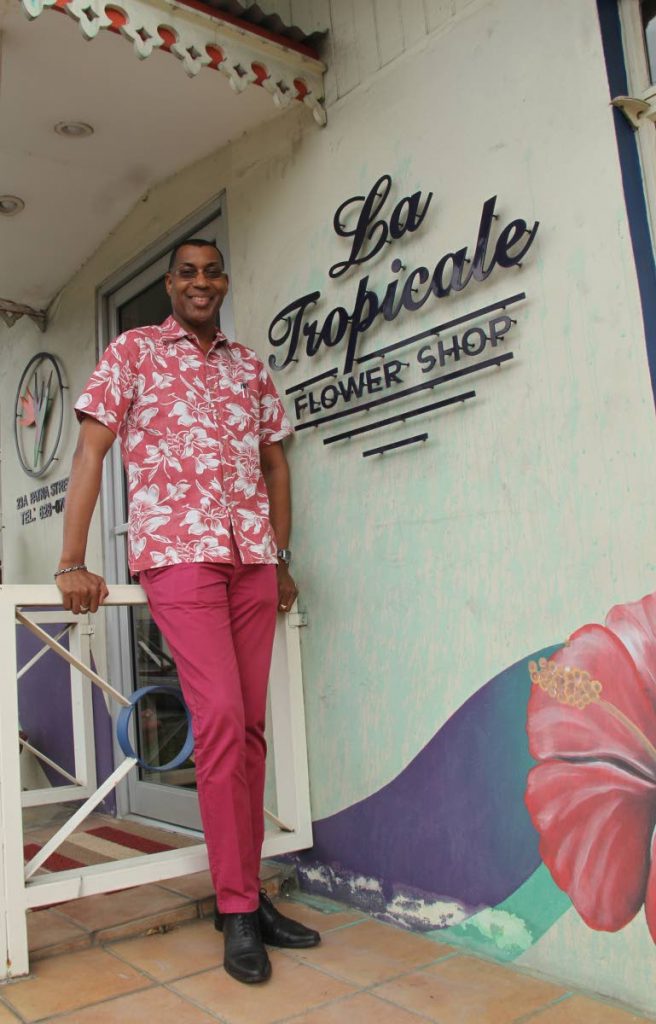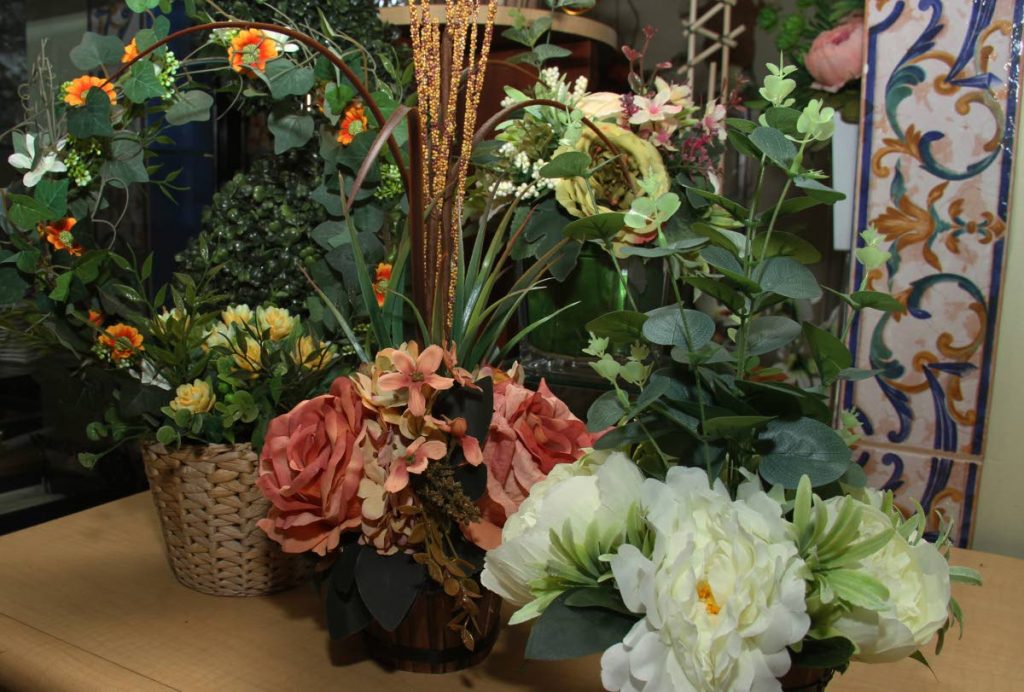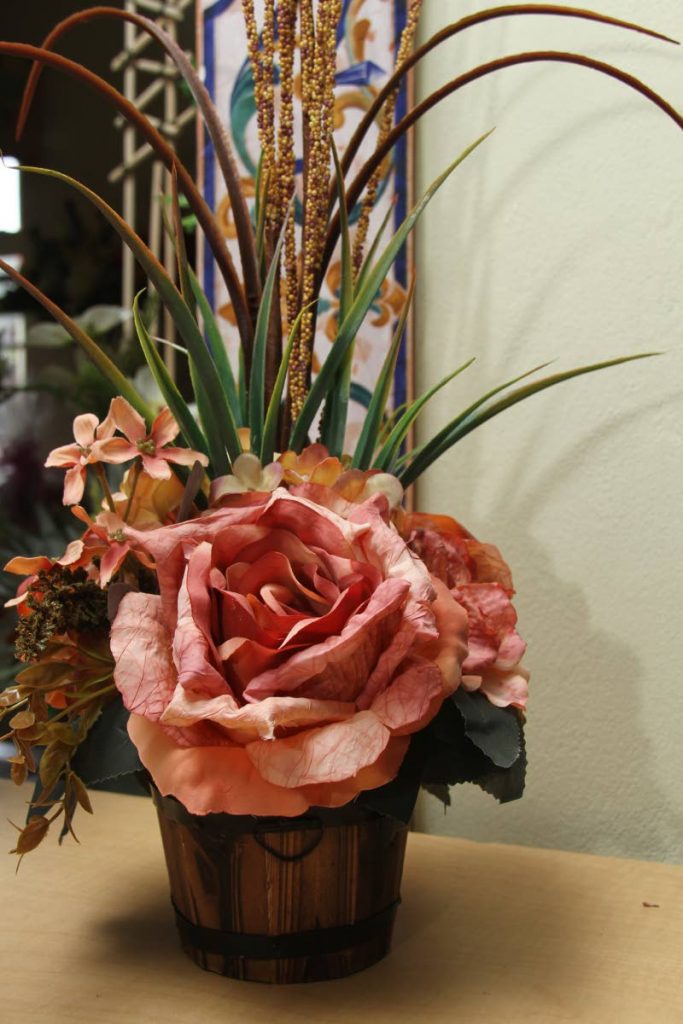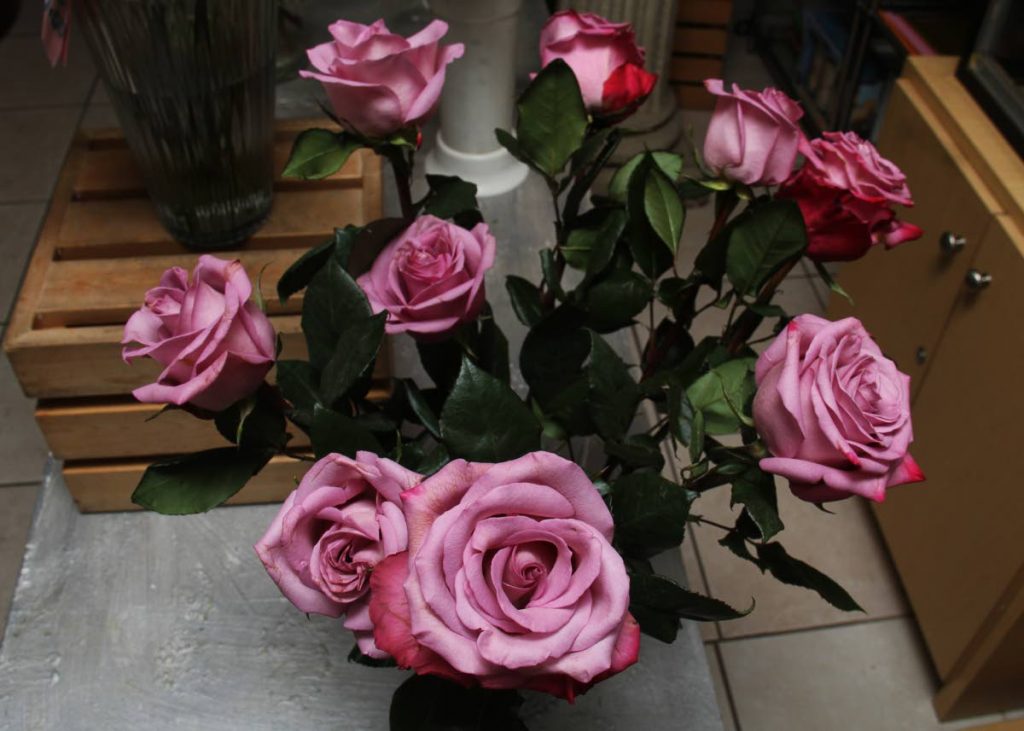Golden Blooms

AMERICAN poet, essayist and philosopher Ralph Waldo Emerson once said, “Flowers...are a proud assertion that a ray of beauty outvalues all the utilities of the world.”
Local floral designer Bernard Beckles sees that kind of beauty in tropical flowers and captures them in floral art.
This ability has gained TT global recognition, most recently at the 2019 Royal Horticultural Society Chelsea Flower Show in London. TT’s display, Rhythms of Our People, received a gold medal at the annual show
which ran from May 20 to 25. The medal was presented to the group on May 21.
It was not the first time Beckles has helped TT receive a gold medal at the event. In 2013, at his very first show, Beckles and the team received a gold medal for a display based on the work of artist Michel Jean Cazabon. Called Through the Eyes of Cazabon, it “recreated scenes from many of his paintings using all of our tropical flowers, foliage and fruits,” Beckles said.
For over 30 years, Beckles has been working with flowers as a career. He has done work showcasing TT’s floral beauty for former ministers and presidents like the late ANR Robinson.
He owns La Tropicale Flower Shop, which sits at the corner of Patna Street, St James. It has a neighbourhood friendliness to it, a hibiscus mural on the wall, a floral colourful mailbox outside, and inside, flowers of all varieties and kind warmly greet you.
His love for his art made it easy for him to overcome challenges at this year’s Chelsea Flower Show.
They began when the six-member
group (Joan Hampton, Beckles, Anthony Tang Kai, Shane Valentine, Gemma Lewis and Nigel Cornwall) did not receive any of the $185,000 in funding for which they had approached various ministries and when the bamboo for the display was not allowed on the plane, as it was three feet too long. However, some friends, well-wishers and some corporate sponsors like Zoom and Hannah Janoura came to the group’s aid.
The Royal Horticultural Society Chelsea Flower Show origins date as far back as 1862 and is usually held for five days in May.
Because of these challenges, when the group arrived in London, members realised the design would have to change.
“I did not have a clue as to what I was going to do. I know the bamboo did not arrive, and that was the main focal point of the display,” Beckles said.

That “put a damper” on his spirit.
“We had issues of not having funding to pay for insurance to be on the grounds, our flowers got problems in clearing...so we had to try to see if we find money to pay insurance. Also we had to find accommodation in which to stay, which is why we ended up staying in a hostel and sharing with other people.”
Beckles found a joiner to recreate the effect he wanted with the bamboo, but the joiner could not get onto the compound because he was not accredited.
“So we still had to pay him his day’s wages and we did not get to use him. The others also could not come on the compound, so we had three days lost because until we could pay the insurance, they were not allowing us on.”
Beckles was the only member of the group allowed in, as its designer.
His initial design included circular movements indicating the sea, “where we all came from,” but which had to be removed.
While walking to the pavilion where the Caribbean countries and displays were being held, Beckles decided to see what he could find around the area. He began going through dumpsters. When people asked why, he replied that he’d find something eventually, picking up a crate someone had thrown out. He also found pieces of wood and shingles from a roof.
He went out on the road and took up branches from trees that had been trimmed.
“I just started to collect things that people were throwing away. I put all at our display spot and then I recreated in my mind a different design, and that is how our Rhythms of Our People came about.”

He was unable to create movement, but “brought the design together as rhythms,” he said, using pan, African drums and tabla, among other things.
“I was able to bring together the Africans, the East Indians, the Chinese, the Spanish, the Syrians, the Amerindians...all of the cultures together.”
Initially, this was not what Beckles saw himself doing for the rest of his life. He loved music and as a past student of Morvant/Laventille Secondary and San Juan North Secondary, he saw himself as a music teacher.
But in his early 20s life had different plans for him. A qualified draughtsman, after studying in Canada, he was waiting to be called for a job and decided to visit a friend who had a flower shop. He was asked to help with deliveries and was impressed by “how amazed” people were upon seeing the flowers.
This led him to wonder if he could do it too. Beckles decided to marry architectural drawing and floral art. One evening he played around with some arrangements and invited some neighbours and close friends. They were impressed.
But his father was not happy about it, saying it would not make any money and was "a ladies' job." But for him its study is important as it makes people aware of their surroundings and creates an appreciation of nature.

There was then a flower shop closing down at the Kapok Hotel and he got a call asking if he wanted to take it over. At first, Beckles said he did not think so, but then gave it some consideration and approached the then Bank of Commerce for a loan.
The bank asked why he wanted to open a flower shop when one was closing down, and what would make him succeed.
He replied that he could not say, but he could try to be different and set a trend that had not been seen before. That was in 1988 and Beckles got the loan.
He sought to find the thing that would make his flower shop stand out. He found it in TT’s local flowers. At the time, Beckles was unable to buy foreign flowers like roses or tiger lilies, and so said to himself, “strictly local.”
In the things people often discarded, Beckles again found beauty, going around the Savannah and Lady Chancellor and picking up things that “people would not observe...that people would take for granted.” He also sourced his flowers from people’s home gardens. So when La Tropicale opened, it had “signature cocoyea brooms, coconut palms and branches.”

“At one point in time, I used to tell people anything that you are discarding call me or just drop it by me.”
He got buy-in from the community: people did indeed begin dropping things like containers and pots at his shop.
“That got me more interested and fascinated in it and I wanted to be different because it meant, if you had other shops that were doing all the roses and other things, for you to stand out and be different you have to set your own trend, style and design. That is where we originated and started from to this day.”
This approach is also applicable to many fields, he added, such as landscaping, architecture, interior decorating and event planning.
“It is like a baker doing a recipe or an artist doing a painting. Once you have your product or material, you have to try and imagine what is in front of you and what can you create with what is in front of you.”
The key to a good floral design or arrangement, like anything else in life, is love.
“You have to love it and if you are doing it for someone, you have to know the client you are doing it for. And you have to know the personality of the person,” Beckles said.
Also, throughout his career, Beckles has had people like late musician and educator Pat Bishop as a mentor. He said Bishop encouraged him and gave him a lot of opportunities to showcase his talent, always telling him “always try to think outside of the box, do the opposite and never say anything is impossible.”
He also credited Judy Aleong, a florist who owned Flower Palace, as teaching him a lot of what he knows today. He worked with her for five years.
He said many people look at this field as a hobby, as something they do when they retire, “like a sideline,” and no one is studying it as a career.
Beckles is now urging younger people to get into growing tropical flowers.
“Just as you do small crops or agriculture crops, it would be nice to get into tropical flowers. Many of our suppliers are people who used to do gardening and are now into the floral industry.”
He has called the Agriculture Ministry to look into this and push toward it.
But over the years he has seen the business change. In La Tropicale’s early years he often met people who had “a passion and love” for growing tropical flowers. TT then, he said, was known as one of the leading exporters of tropical flowers in the Caribbean and “was looked upon as one of the mecca of tropical flowers.
“We would have rare flowers and rare foliage here that other Caribbean islands would not have.”
Foreigners, he added, were often fascinated by the size, the quality and texture of what was grown in TT. But he has since seen a lot of those people who had home gardens and who grew tropical flowers for the love of it, die. TT’s younger generation, he has also found, does not find it economical to get into the business. One of his biggest fears is that “there is no mechanism or no avenue for young people leaving school (in TT) to see this as a career.”
Beckles wants the people of TT to be mindful and to take pride in the natural environment.
“We do not really see the beauty of the forestry and the importance it brings to people’s lives. It is something that comforts you in death, something that brings you joy in marriages and anniversaries. It is something of comfort and peace of mind.”


Comments
"Golden Blooms"